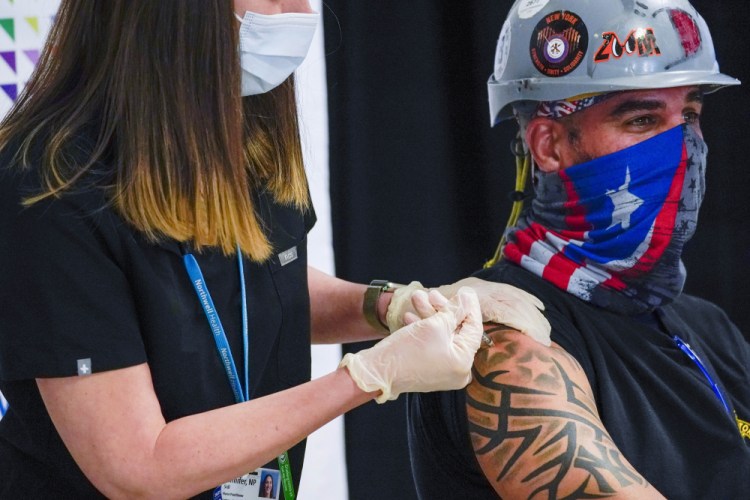WASHINGTON — The White House on Tuesday told states that vaccine supply they leave unordered will become available to other states – the most significant shift in domestic vaccine distribution since President Biden took office, and part of an effort to account for flagging demand in parts of the country.
Each state’s share of the total U.S. adult population will still determine weekly allocations. But instead of allowing unordered doses to carry over week-to-week, the White House will steer untapped vaccine into a federal bank available to states where demand continues to outstrip supply. Those states will be able to order up to 50 percent above their weekly allocation.
The use-it-or-lose-it strategy has the potential to transform how vaccine flows across the country. In recent weeks, numerous states have begun leaving significant quantities of doses on the shelves. Last week, officials in Arkansas declined their entire share, the state confirmed.
The scramble to make use of all available shots is intensifying as the pace of daily vaccinations falls off significantly – and as health authorities pivot to inoculating hesitant and hard-to-reach populations. The seven-day average of daily shots administered dropped by 17 percent during the past week, according to data analyzed by The Washington Post, and by 33 percent since April 13.
Jeff Zients, coordinator of the White House coronavirus task force, said the changes reflect how quickly the federal government has been able to make shots available to everyone eager for them.
People willing to drive long distances have been covered, he said. More than 80 percent of people older than 65 have received at least one dose. In the next phase of the immunization campaign, defined by efforts to improve access and build confidence, “there is a need to add more flexibility to the current system,” Zients said in an interview.
The White House was at pains to avoid the perception of penalizing states – or of picking winners and losers. Those not ordering their full allocation one week will not lose out permanently, instead ceding supply on a one-time basis. The changes are sensitive because governors have grown protective of vaccine supply, eager to tout expanding availability for constituents after a period of intense scarcity in the winter.
Federal officials had weighed other changes, including metrics that would account not just for unordered inventory but the pace of administering shots already distributed to states, according to people familiar with the discussions. The White House, however, has been intent on adhering closely to the population-based formula, notably rejecting an appeal from Michigan’s Democratic Gov. Gretchen Whitmer to surge vaccine to her state as it faced a crushing caseload in March and April.
Days before leaving office in January, Trump administration officials had unveiled an incentive system that would have rewarded states with additional shots if they quickly used their supply. The Biden administration scrapped that idea and instead retained a population approach in most instances, even as it gradually directed more vaccine doses to retail pharmacies, community health centers and federally run mass vaccination sites.
As part of the changes announced Tuesday, pharmacies will have greater flexibility to redistribute doses to places where demand is greatest.
Guidelines for the federal program had made 80 percent of the supply going to pharmacies tethered to a state’s population and the other 20 percent available for pharmacies to reallocate. Going forward, only a majority of the supply will be dictated by a state’s population, and pharmacies will have discretion over as much as 49 percent of the deliveries.
Send questions/comments to the editors.



Success. Please wait for the page to reload. If the page does not reload within 5 seconds, please refresh the page.
Enter your email and password to access comments.
Hi, to comment on stories you must . This profile is in addition to your subscription and website login.
Already have a commenting profile? .
Invalid username/password.
Please check your email to confirm and complete your registration.
Only subscribers are eligible to post comments. Please subscribe or login first for digital access. Here’s why.
Use the form below to reset your password. When you've submitted your account email, we will send an email with a reset code.